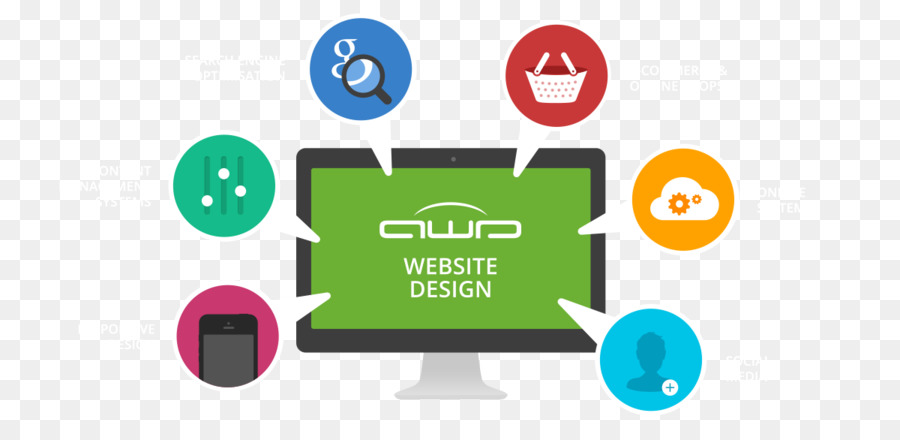Fascinated In Discovering Exactly How Site Layout Has Progressed Throughout The Years? Discover The Journey From Standard, Simple Layouts To User-Centric Interfaces That Prioritize The Site Visitor'S Experience
Fascinated In Discovering Exactly How Site Layout Has Progressed Throughout The Years? Discover The Journey From Standard, Simple Layouts To User-Centric Interfaces That Prioritize The Site Visitor'S Experience
Blog Article
Content By-Collier Vinson
In the past, websites were straightforward and concentrated on information. Navigation was direct, and layout was for desktops. Currently, customer experience is essential. Information overviews styles for easy navigation. Responsive designs suit different devices. https://ricardomhcvq.blogdeazar.com/30000301/enhancing-your-internet-site-s-performance-through-specialist-on-page-seo-approaches , dark mode minimizes stress, and minimal menus boost navigating. Interactive features involve individuals, and bold visuals attract attention. AI assimilation boosts interaction. See exactly how design has actually developed to enhance your on-line journey.
Early Days of Web Design
In the very early days of web design, simpleness preponderated. Sites were basic, with limited shades, typefaces, and formats. The focus was on giving information rather than fancy visuals. Users accessed the web through slow dial-up links, so rate and functionality were vital.
Navigation menus were straightforward, normally located at the top or side of the web page. Websites were designed for desktop computers, as mobile surfing wasn't yet widespread. Content was king, and developers focused on simple readability over complicated layout components.
HTML was the key coding language made use of, and developers had to work within its restraints. Computer animations and interactive attributes were marginal compared to today's standards. Websites were fixed, with little dynamic material or individualized customer experiences.
Surge of User-Focused Design
With the advancement of web site layout, a change in the direction of user-focused layout concepts has become significantly popular. Today, producing web sites that prioritize individual experience is essential for involving visitors and accomplishing service goals. User-focused style entails comprehending the needs, choices, and behaviors of your target market to tailor the site's format, content, and includes as necessary.
Designers currently carry out comprehensive research study, such as user studies and use screening, to collect understandings and comments straight from users. This data-driven strategy aids in producing intuitive navigation, clear calls-to-action, and visually appealing user interfaces that resonate with visitors. By putting the customer at the facility of the design process, web sites can deliver a more customized and satisfying experience.
Receptive design has actually also emerged as a key aspect of user-focused style, guaranteeing that websites are maximized for different devices and screen dimensions. This adaptability improves ease of access and functionality, catering to the varied ways individuals interact with internet sites today. Basically, https://www.greaterkashmir.com/tech/5-digital-marketing-strategies-to-drive-more-sales of user-focused design signifies a shift towards creating electronic experiences that focus on the requirements and assumptions of the end customer.
Modern Trends in Web Design
Explore the most up to date fads forming website design today. One prominent trend is dark mode design, supplying a sleek and modern-day look while lowering eye strain in low-light atmospheres. One more essential trend is minimal navigating, simplifying food selections and enhancing user experience by focusing on essential elements. Integrating micro-interactions, such as animated switches or scrolling results, can develop an extra interesting and interactive web site. Receptive style continues to be essential, ensuring smooth user experiences throughout numerous tools. Additionally, utilizing vibrant typography and unbalanced formats can add aesthetic passion and accentuate certain material.
Incorporating AI innovation, like chatbots for consumer assistance or tailored suggestions, enhances individual engagement and enhances procedures. Accessibility has also come to be a significant fad, with developers prioritizing comprehensive style methods to deal with varied customer requirements. Welcoming sustainability by enhancing website efficiency for speed and performance is one more emerging fad in web design. Working together with customer responses and information analytics to iterate and enhance layout continually is crucial for remaining relevant in the ever-evolving electronic landscape. By embracing these modern-day patterns, you can create an aesthetically attractive, easy to use site that reverberates with your audience.
Conclusion
As you reflect on the development of website design from the early days to now, you can see just how user-focused layout has become the driving pressure behind modern fads.
Welcome the trip of modification and adaptation in web design, constantly keeping the customer experience at the forefront.
Stay present with the most up to date trends and innovations, and never ever stop evolving your approach to create aesthetically magnificent and user-friendly websites.
Progress, adapt, and develop - the future of website design is in your hands.
